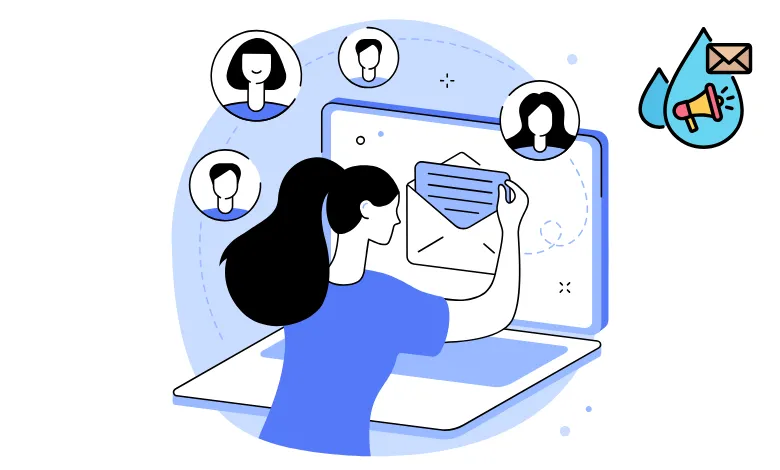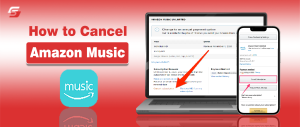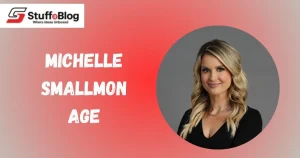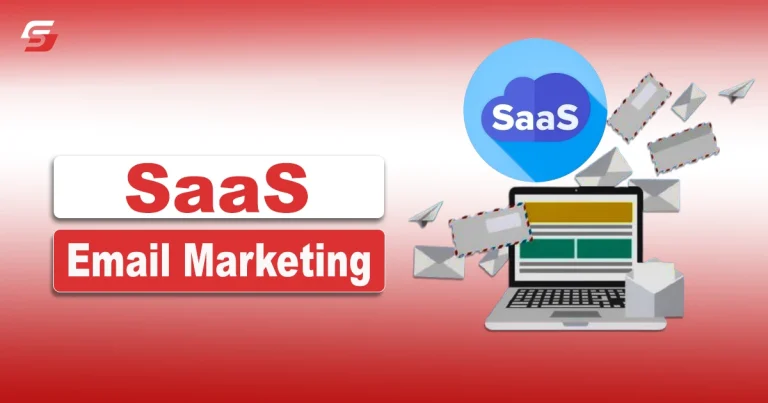Email marketing is one of the most effective tools for businesses to engage with customers. For SaaS companies, it plays an important role in managing customer relationships and promoting subscription-based products.
Unlike traditional digital marketing approaches, SaaS email marketing focuses on personalized experiences. In order to execute this strategy, you need to follow a few simple strategies.
In this article, I am going to discuss the best SaaS email marketing strategies that you can use this year. Let’s start.
What is SaaS Email Marketing?
SaaS email marketing focuses on using email campaigns to promote subscription-based software. It involves sending personalized emails that engage customers throughout their journey. SaaS emails are designed to keep users engaged and aware of your software brand.
To shed light on the importance, let’s check out the following email marketing statistics:
- There are 4 billion daily email users. This number is expected to reach to 4.6 billion by the end of 2025.
- 50% of B2B marketers say email marketing is the most impactful channel in their multi-channel marketing strategy.
- 71% of B2B marketers use an email newsletter as part of their content marketing strategy.
- For every $1 spent on email marketing, the average return is $36,

10 Best Saas Email Marketing Strategies
I’ve given the details of these strategies below:
1- Segment Your Email List
Sending relevant and tailored messages to each set of subscribers is ensured by segmenting your email list. Conversions and engagement may be raised by segmenting your audience according to criteria like previous behavior. They’re related to a bunch of different things including using email templates. This approach helps deliver personalized content that resonates with each group.
Tips:
- Use data like user behavior to create segments.
- Categorize subscribers by lifecycle stages.
- Tailor your messaging for each segment and test different approaches.
- Regularly update segments based on user activity and preferences.
2- Focus on Valuable Content
Valuable content means providing useful and relevant information to your subscribers. Instead of focusing solely on sales, your content should offer useful things like insights and tips.
Doing this thing will help the audience get rid of the problems they’re facing. It also builds trust and strengthens customer relationships which helps to make them engage and convert.
Tips:
- Share helpful resources like blog posts, tutorials, or product tips.
- Discuss common pain points along with their solutions.
- Offer free tools or discounts to provide immediate value.
3- Leverage Drip Campaigns
Drip campaigns are automated email sequences that focus on new users through a series of helpful messages. For SaaS businesses, these campaigns are essential for onboarding new customers. It helps with guiding them step-by-step through the software’s features and benefits which makes the whole journey a bit easier for people.
Tips:
- Create a series of emails that introduce users to key features of your software.
- Don’t send a lot of messages to avoid overwhelming new users.
- Include clear calls to action (CTAs).
- Monitor open rates and engagement to optimize the sequence.

4- Use Behavioral Triggers
Another useful SaaS email marketing strategy is using behavioral triggers. They are emails sent in response to specific user actions such as signing up. These emails are highly relevant because they’re based on user behavior. It helps with increasing the likelihood of engagement and conversions.
They also help deliver content that matches the user’s current needs or intent.
Tips:
- Set up automated emails for actions like sign-ups.
- Personalize emails based on the specific action a user took.
- Create urgency with time-sensitive offers or reminders.
5- Use Proper Personalization
Personalization means more than adding a name to your emails. Tailoring content to user preferences, actions, etc., is also necessary. It makes the messages feel more relevant and engaging. Personalized emails show users that your brand understands their journey which helps increase the chances of conversions.
Use behavioral data to suggest features or offer solutions that match user activity.
For example, you can try referencing past behavior to add a little human touch to the messages.
Tips:
- Use data to send messages on user interests or behavior.
- Suggest features or updates relevant to each user’s activity.
- Reference past interactions for a better impression.
6- Offer Free Trials
Free trials give potential customers the opportunity to try out your software before subscribing. Once a user signs up, nurture them with targeted emails that showcase the value of the product. It is one of the most promising strategies available out there. Besides bringing in permanent customers, it will also help build a better reputation.
Tips:
- Send a welcome email that introduces the trial’s features and benefits.
- Follow up with reminders and tips on getting the most out of the trial.
- Include a clear CTA to convert to a paid plan before the trial ends.
7- Optimize for Mobile
Many users check emails on their phones because it’s convenient. A mobile-friendly design is essential to benefit from this. Emails that are easy to read on the phone prevent users from unsubscribing. Use responsive designs to ensure your messages display properly across devices.
Tips:
- Use a responsive email design that adapts to different screen sizes.
- Keep subject lines short and to the point.
- Make buttons large and easy to tap.
8- A/B Test Key Elements
A/B testing compares two versions of an email to see which performs better. By experimenting with different things, you can refine your campaigns over time. Testing helps identify what resonates most with your audience.

So, focus on one variable at a time for clear insights. Also, use meaningful sample sizes to ensure reliable results. After that, apply successful elements to future emails.
Tips:
- Test one element at a time.
- Use a big sample size for accurate results.
- Monitor performance metrics closely.
- Apply winning tactics to future campaigns for improved results.
9- Include Clear and Compelling CTAs
A CTA guides users to take the next step, whether it’s signing up for a trial or upgrading a plan. Your CTAs should be clear and compelling to encourage users to act. You can use contrasting colors and bold fonts to make the button stand out. Also, phrases like “Get Started” are a great option to add.
Tips:
- Use action-oriented phrases.
- Make it stand out with contrasting colors.
- Place the button strategically within the email.
- Keep CTAs focused on one goal to avoid confusion.
10- Use Social Proof
Social proof, such as customer testimonials or success stories, builds trust and credibility for your SaaS product. So, sharing real-life experiences can help reassure potential customers and show how others benefit from your software.
You should highlight satisfied users’ experiences and key statistics. Also, sharing user-generated content can help create a sense of community as well.
Tips:
- Include customer reviews or case studies in your emails.
- Highlight testimonials from satisfied users.
- Use statistics metrics to showcase value.
- Create a sense of community by sharing user-generated content.
Conclusion
SaaS email marketing plays a vital role in engaging customers and improving conversions. By applying strategies like segmenting your email list and offering valuable content, you can ensure your messages resonate with the right audience. So, keep the suggested strategies in mind and apply them to your campaigns. Try to pick the one that is the most relevant to your product type and make it grow over time.
FAQs
How often should I send SaaS marketing emails?
Aim for one to two emails per week. Test and adjust based on audience engagement to avoid overwhelming subscribers.
How to deal with customer onboarding?
Use a series of well-timed emails. You should try starting with a welcome message and then send guides and tips on key features.
How can I measure the success of my campaigns?
There are different ways to track the performance. For example, you can track things like open rates and click-through rates to check the efficiency of the campaign.




